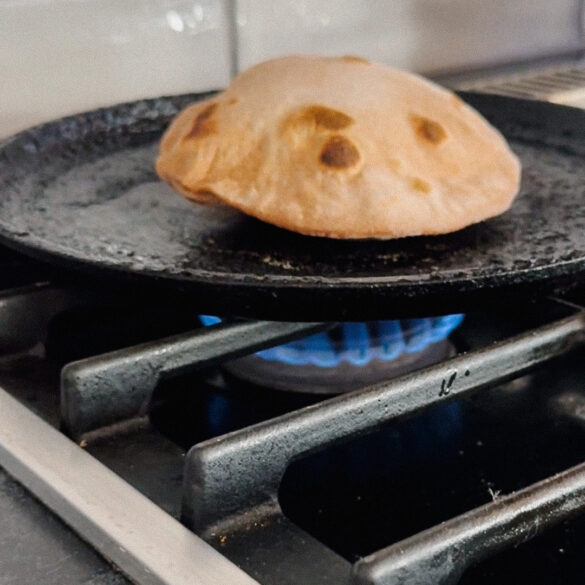This recipe takes the traditional Indian chapati or roti and gives it a boost of fiber adding psyllium husk powder. An added bonus, it make the chapatis softer.
I previously shared a recipe on how to make chapati with yeast, which makes it more storable without freezing. If you cook chapati, you know that you have to eat them hot because leaving them out, even for just an hour doesn’t cut it. These chapatis retain their softness even if you eat them a few hours after cooking. The psyllium husk powder allows the dough to retain moisture, but I recommend freezing them if you’re not eating them the same day.
Note that these chapatis with psyllium husk will be a little darker than usual.
Freezing and Serving
I make these for my husband. He usually eats three per meal, so I take 3 chapatis wrap them in foil. When they are ready to eat, you can heat them up in the oven or microwave.
If using a microwave, remove foil, place them on a plate and cover in wet paper towel. Heat them up for 60 seconds each side. In the oven, 10 minutes at 350°F.
Traditional Indian dishes drizzle chapatis or rotis with ghee or butter. I actually love these without it. You can serve with Dal Makhani or Buttery Lentil Soup.
Psyllium husk helps with constipation and overall gut health, managing diabetes, and lowering LDL cholesterol.

